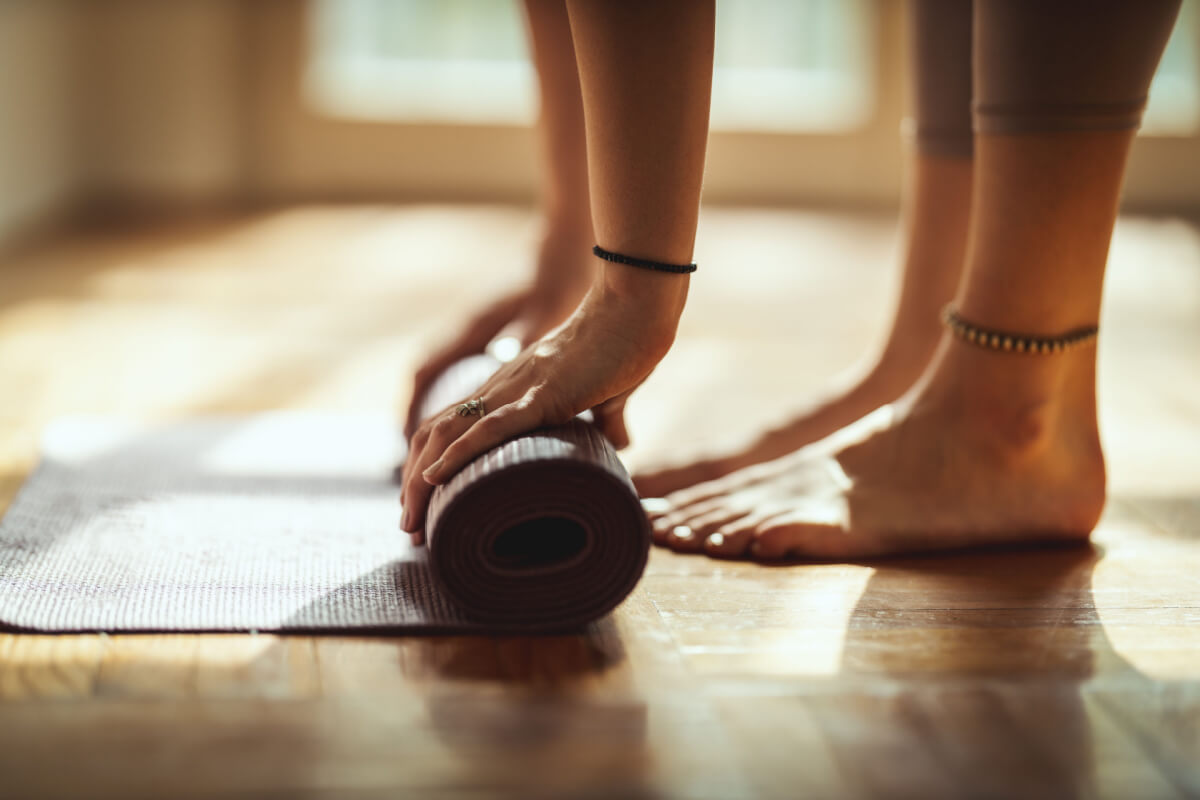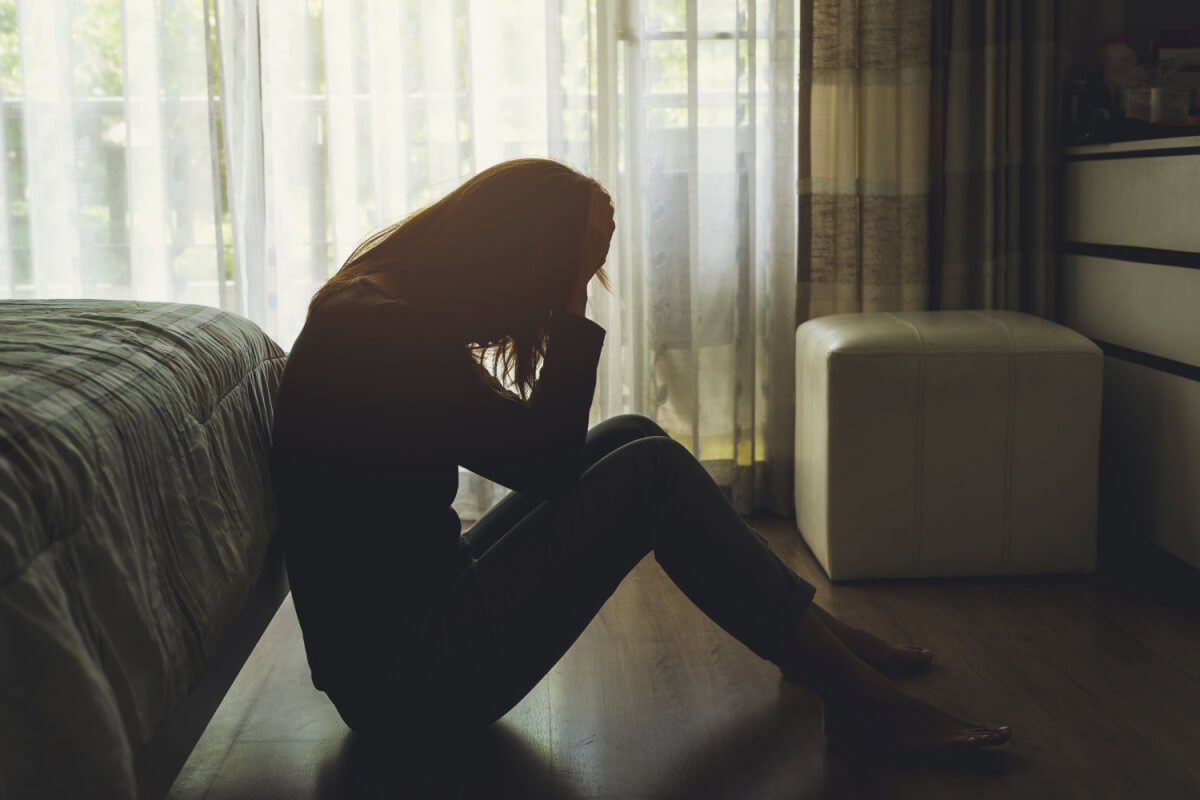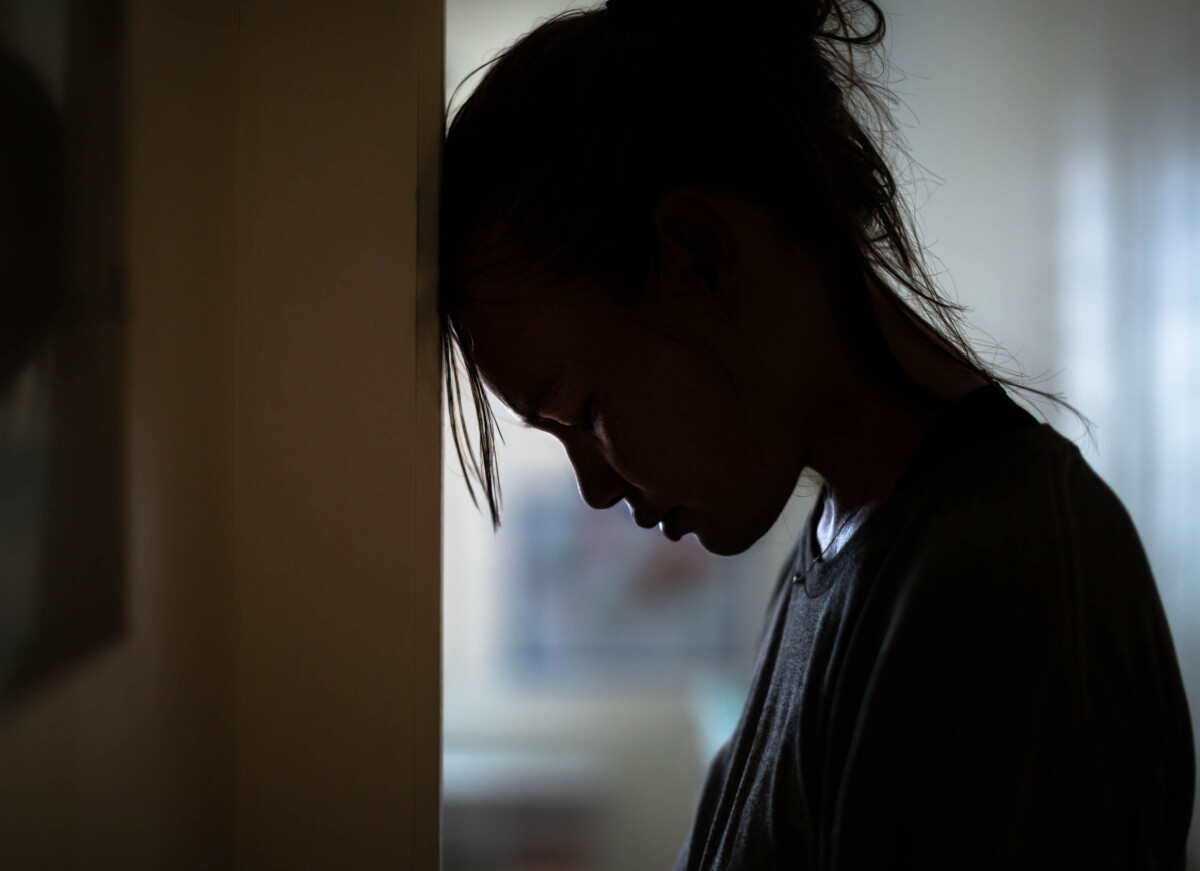
A relapse prevention plan is a written document that you can share with your support team – yourself, friends, family, and health professionals – to minimize a return to unhealthy behaviors, including drug and/or alcohol use.
Addiction is a chronic disease with relapse rates between 40% and 60%. [1] To prevent relapse it can be helpful to have a plan, recognize when old patterns or triggers come up, and learn how to manage them.
A concrete relapse prevention plan can help prepare the patient for the signs and symptoms that may indicate impending relapse so that the individual can intervene before they use substances again.
Relapse is often gradual. Recognizing dangerous behaviors before you pick substances up again can help to prevent a relapse.
What Is a Relapse Prevention Plan?
Relapse is common with substance use disorder (SUD). It does not indicate failure, as it is often a natural part of the healing process. A relapse prevention plan helps to prevent a relapse or minimize the consequences of a partial relapse.
Relapse generally does not happen overnight. Some researchers consider it to have three distinct phases:[2]
- Emotional relapse: The individual is not thinking about using, but isolation, denial, bottling up of emotions, and other negative emotional patterns begin.
- Mental relapse: The individual is often torn between wanting to use and not wanting to use. They begin to bargain with themselves and have difficulties recognizing high-risk situations.
- Physical relapse: The return to actual use of substances.
A relapse prevention plan helps a person to identify the initial phases of a relapse – emotional and mental – before a physical relapse occurs.
Steps to Creating a Relapse Prevention Plan
When creating a relapse prevention plan, it can be helpful to work with a trained professional who understands SUD. The plan often works best if it is written down. It also often works best if the clinicians know the patient well and their individual situations, triggers, and strengths. It can also be helpful for family or friends to be involved.
- Assess Your Personal History
It is helpful to know exactly what has caused a relapse before, and your own history of drug and alcohol misuse.
- Set Recovery Goals
Know what you are aiming for and what you want in your life. Write these specifics down. They can include career goals, family goals, educational goals, spiritual goals, hobbies or activities you want to explore, and more.
- Identify Potential Triggers
It is vital to know what could possibly lead to relapse. Make a detailed list. Be as specific as you can, outlining potential scenarios or stressors.
Researchers define a “trigger” as something that sparks drug cravings.[7] Yours might include the following:
- People you’ve used drugs with
- Places where you’ve used drugs
- Ringtones you associate with your dealer
- Tools (like needles) you’ve used to take drugs
- Negative physical states, like pain or hunger
- Negative emotional states, like stress or frustration
Think back to the days before your last relapse. How did you feel? Who did you see? How well were you sleeping and eating? You might spot patterns that could highlight triggers.
Knowing your individual triggers is critical, as once you’ve identified them, you can craft plans to avoid them altogether or deal with them if they appear.
- Understand Your Warning Signs
Since relapse often starts with the emotional and then mental aspects, it’s important to recognize your own personal responses.
- Design an Action Plan
This is one of the most important parts of the plan. It should detail exactly what to do if you feel the signs of a relapse beginning.
Start with your list of identified triggers, and move through them one by one. Your plan might involve a list of the people you will call, the actions you will take, and what you will do instead of returning to substance use. Be as detailed and specific as possible.
Here are a few examples of appropriate responses to the triggers we identified earlier:
- People you’ve used drugs with: Contact your former partners and tell them you’re not using drugs anymore. Delete them from your phone. If you see them while you’re out and about, call your sponsor and talk about it.
- Places where you’ve used drugs: Find a new route to work that won’t take you past the places where you bought or used drugs. If your home is a trigger, ask some friends to help you paint and redecorate.
- Ringtones you associate with your dealer: Delete your dealer’s number from your phone, and don’t use that tone for anyone else in your contact list. If your phone itself is a trigger, contact your cell provider and ask about an upgrade to a different make and model.
- Tools (like needles) you’ve used to take drugs: If you encounter drug paraphernalia, you’ll call your sponsor and discuss it.
- Negative physical states, like pain or hunger: Create a detailed schedule that includes mealtimes, regular exercise, and a good sleep/wake cycle. If you feel discomfort, use meditation to help you move past it.
- Negative emotional states, like stress or frustration: Make a list of things you’re thankful for, or take photos on your phone of things that make you happy. Call your sponsor when you’re feeling upset, and take a walk or ride your bike for a mood boost.
These are examples of strategies you might use in your personalized relapse prevention plan. Your tools and tips may look very different. Customize your approach and find something that works well for you.
Include your support people in your action plan, so they know how to best encourage you when needed.
What to Include in a Relapse Prevention Plan
Each relapse prevention plan will be personal and specific to you, but there are some general things that should be included, such as:
- Personal triggers: List exactly what people, places, things, behaviors, actions, emotions, dates, and more might be a trigger for relapse for you.
- Coping tools and strategies: Define what tools, strategies, and activities you can do to minimize cravings and prevent relapse. Hobbies, activities, support group meetings, breathing exercises, journaling, or other things you have learned in therapy or counseling sessions can help.
- Support: Write down where you will turn for help. Make a list of people to call, support group meetings to attend, therapy sessions you can go to, and programs you can turn to for relapse prevention help.
- Lifestyle strategies: Think proactively when making a relapse prevention plan. Write down possible lifestyle enhancements, such as ways to stick to a healthy diet and exercise plan, embrace educational opportunities, and try recreational activities that can offer a positive outlet.
How to Involve Your Support System
Research suggests that families learn a lot about SUD as they help people they love. They learn about how to get treatment, they determine how to use rescue medications like naloxone, and they become experts at caring for children left behind.[8] These experts are well-qualified to help with your recovery, and they should be part of a relapse prevention plan.
Tell your support system that you’re working on a relapse prevention plan, and ask for input. As outsiders, they may help you identify relapse triggers you’ve overlooked. They may also be eager to be contact points as you craft your trigger responses.
When your plan is complete, give your support system a copy of the document. Remind them you’re not asking them to police your behavior. However, they can help you stay accountable. For example, if they notice you’re staying out late every night and avoiding the rules you set about sleep, a gentle reminder could help you get back on track.
Relapse Prevention Plan Template
Everyone’s relapse prevention plan will look different, but here is a form you can fill out to create yours:[3]
- Write down the reasons you stopped drinking or using drugs.
- List some of the feelings that may trigger you.
- For each feeling, list a healthy coping strategy to manage it.
- List thoughts that could increase the risk of relapse
- Write down behaviors that could lead to relapse
- Write down the people you’re most likely to relapse with or around
- List five trusted people you can call when you’re feeling cravings or want to relapse
- Consider the places you’re most likely to relapse in
- List any other triggers or situations that could lead to relapse
- List daily life and self-care plans, such as eating nutritious meals and getting enough sleep
- Write down 10 ways to cope with drug or alcohol cravings
- Write down the specific support services you’ll attend each week, such as meetings and therapy sessions
- Make a plan for how you will get to these meetings or sessions and write down when they are in a place you’ll see them
- List five consequences of relapse
- List five benefits of your recovery program
- Write down five short-term goals you can only achieve in recovery
- Write down five long-term goals you can only achieve in recovery
Relapse Prevention Models
While each relapse prevention plan is unique, there are several different models that help provide a template. Examples are the Marlatt and Gordon model and the Gorski-CENAPS Model for Recovery and Relapse Prevention.
Marlatt and Gordon Relapse Prevention Model
This model explains how both things that are right in your face, which include high-risk situations, coping skills, and outcome expectancies, as well as factors that are more underlying, like cravings and lifestyle issues, can contribute to relapse. [3]
The model also details how both specific and global strategies can be used to reduce the risk of relapse. By identifying possible high-risk situations that are specific to an individual and designing coping strategies for managing them along with more generalized strategies that include lifestyle balance, relapse can be avoided or the effects reduced.
Gorski-CENAPS Model for Recovery and Relapse Prevention
This model uses nine basic principles for relapse prevention planning. It couples each principle with a clinical technique or procedure to use for minimizing and preventing relapse: [4]
- Self-regulation: Physical, social, and psychological stabilization
- Integration: Self-assessment
- Understanding: Relapse prevention education
- Self-knowledge: Identification of relapse warning signs
- Coping skills: Warning sign management
- Change: Review of the recovery plan
- Awareness: Inventory training
- Support: Involvement of significant others
- Maintenance: Comprehensive follow-up plan
Frequently Asked Questions
These are the questions we hear most frequently about relapse prevention plans:
No. Experts consider substance use disorder a chronic condition, and for many people, a lapse is part of the process of recovery. A return to drug use does mean that the person needs to talk to a treatment team and pick up skills that can prevent the next episode.[1]
No. The National Institute on Drug Abuse says newer treatments are designed to help with relapse prevention.[1] Some people using these therapies don’t return to drugs.
A relapse prevention plan can help you identify triggers, develop coping skills, and understand who is ready to help you in a crisis. It only works when you follow it.
Relapse Prevention Resources
There are many worksheets, workbooks, and support group options that can aid in relapse prevention. Here is a sampling:
- SMART Recovery Toolbox: This resource offers worksheets and exercises to support recovery.
- Relapse Prevention Therapy Workbook: This is based on the Gorski-CENAPS Model.
- Alcoholics Anonymous (AA): AA offers peer support group meetings and a comprehensive 12-step program.
- Narcotics Anonymous (NA): Like AA, NA offers peer support group meetings and a 12-step program for those with substance use disorders.
- SAMHSA’s National Helpline: SAMHSA provides resources for recovery and treatment referral information.
Your therapist, mental health professional, or SUD counselor will likely also have relapse prevention resources they can share with you. Generally, these resources are available as part of a comprehensive treatment program for SUD.

By Peter Manza, PhD
Peter Manza, PhD received his BA in Psychology and Biology from the University of Rochester and his PhD in Integrative Neuroscience at Stony Brook University. He is currently working as a research scientist in Washington, DC. His research focuses on the role ... Read More
- Treatment and Recovery. National Institute on Drug Abuse (NIDA). https://nida.nih.gov/publications/drugs-brains-behavior-science-addiction/treatment-recovery. July 2020. Accessed March 2022.
- Relapse Prevention and the Five Rules of Recovery. Yale Journal of Biology and Medicine. https://www.ncbi.nlm.nih.gov/pmc/articles/PMC4553654/. September 2015. Accessed March 2022.
- Relapse Prevention. An Overview of Marlatt’s Cognitive-Behavioral Model. Alcohol Research & Health. 1999. Accessed March 2022. https://pubmed.ncbi.nlm.nih.gov/10890810/
- The Cenaps Model of Relapse Prevention: Basic Principles and Procedures. Journal of Psychoactive Drugs. https://pubmed.ncbi.nlm.nih.gov/2197389/. April-June 1990. Accessed March 2022.
- SMART Recovery Toolbox. SMART Recovery. https://www.smartrecovery.org/smart-recovery-toolbox/. 2022. Accessed March 2022.
- Relapse Prevention Therapy Workbook. Gorski Publications. https://www.gorskibooks.com/products/relapse-prevention-therapy-workbook. 2022. Accessed March 2022.
- What Is the Trigger of Addiction? Frontiers in Behavioral Neuroscience. https://www.ncbi.nlm.nih.gov/pmc/articles/PMC7186308/. April 2020. Accessed January 2024.
- The Roles and Experiences of Family Members Who Care for a Person with Substance or Opioid Use Disorder. Journal of Substance Use. https://www.tandfonline.com/doi/abs/10.1080/14659891.2022.2089247. June 2022. Accessed January 2024.
Download Our Free Program Guide
Learn about our program, its effectiveness and what to expect
Related articles
Imagine what’s possible on the other side of opioid use disorder.
Our science-backed approach boasts 95% of patients reporting no withdrawal symptoms at 7 days. We can help you achieve easier days and a happier future.









